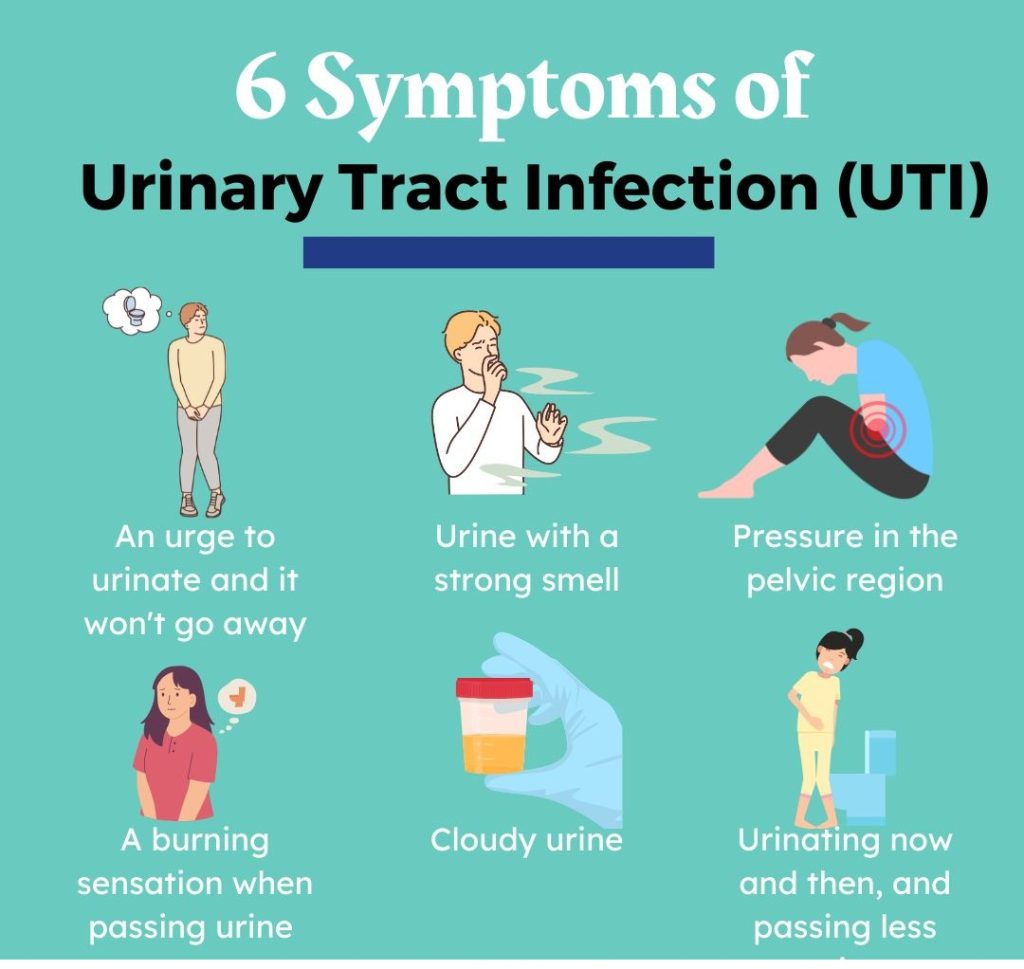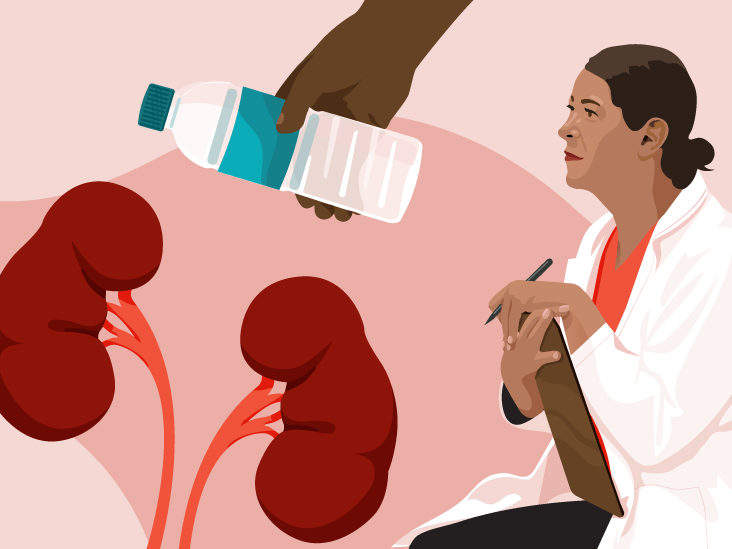Overview for UTIs
Urinary tract infections (UTIs) are common in adults 65 and older, mainly due to age-related factors like malnutrition, poor bladder control, and uncontrolled diabetes.
Symptoms in older adults may also differ from those of younger people, with typical symptoms including pain during urination and atypical ones being drowsiness, confusion, loss of appetite, and delirium (a state of confusion and disorientation that usually occurs abruptly and is temporary).
UTIs can be misdiagnosed in older adults, particularly those who are physically weak or in nursing homes, in whom delirium may be mistaken for dementia (progressive impairment in mental functions). Treatment can be more complicated at this stage of life, often requiring a larger arsenal of antibiotics to clear the infection.

Causes of UTIs and Why the Risk Increases With Age
Urinary tract infections are among the most common infections encountered in medical practices. They are caused by bacteria usually on the skin or rectum entering the bladder via the urethra (the tube through which urine enters the body), mostly commonly from bacteria on the skin or rectum.
UTIs can affect people of all ages and sexes. However, females have a higher incidence than males, in large part because their urethras are shorter and situated closer to the anus.
While UTIs can affect anyone, people who are immunocompromised (have a weakened immune system) or are living with diabetes or chronic kidney disease are more vulnerable to infection. These conditions are common in the United States, particularly with older age.
Common Symptoms

Typical UTI symptoms include:
- Frequent urination
- Pain or burning with urination
- Pressure or cramping in the groin or lower abdomen
- Urge to urinate (pee) when the bladder is empty
In severe cases, there may also be fever with chills, nausea and vomiting, and blood in the urine.
Older adults with a UTI can experience these typical symptoms in addition to atypical symptoms, especially in those who are physically weak, cognitively impaired, or bedridden.
In many (but not all) elderly people, a UTI will present with the following:
- Absence of fever
- Delirium (confused thinking and awareness)
- Dizziness and falls
- Increased sleepiness
- Loss of appetite
- Sudden fatigue
- Sudden bed-wetting
- Sudden fatigue
- Sudden onset of confusion
These atypical symptoms in older, physically unwell adults may be missed or attributed to other causes, including medications they may be taking. Delirium, a generally reversible mental state, may be mistaken for dementia, which is not reversible. Because of this, treating a UTI may be delayed until the person’s condition turns critical.
What’s the Best Treatment?
UTI treatment in older adults is similar to that of younger adults but with some key differences. The choice of antibiotics tends to be more targeted. This is due in part to drug interactions (how a drug’s actions in the body are altered by another substance) and contraindications (reasons a drug is not advised or safe to use) that can occur when taking certain antibiotics with medications used to treat diabetes or kidney disease.
For instance, antibiotics known as fluoroquinolones are generally avoided in people with advanced chronic kidney disease due to an increased risk of delirium, hypoglycemia (low blood sugar), and abdominal aortic aneurysm rupture.
Similarly, certain antibiotics can interfere with the control of diabetes and contribute to the onset of type 2 diabetes.
Because of this and other factors, broad-spectrum antibiotics are avoided by many healthcare providers in favor of single-agent antibiotics that target specific bacteria. Doing so also reduces the risk of antibiotic resistance (bacteria becoming less responsive to an antibiotic), a factor especially important to people with recurrent UTIs.
For an uncomplicated UTI, the following oral antibiotics can be used:
- Macrobid or Macrodantin (nitrofurantoin), 100 milligrams (mg), taken once daily for five days
- Bactrim or Septra (trimethoprim-sulfamethoxazole): One double-strength tablet taken twice daily for three days
- Monurol Sachet (fosfomycin): 3,000 mg oral solution taken as a single dose
- Blujepa (gepotidacin): 1,500 mg taken twice daily for five days
Nitrofurantoin is considered the first-line option. Fosfomycin is an acceptable alternative if nitrofurantoin cannot be used. Other antibiotics, including Vantin (cefpodoxime), may be used if these preferred options are unavailable.
Other antibiotics may be chosen for people with indwelling catheters who are more likely to have multidrug-resistant bacteria.
Getting a Diagnosis
UTIs in older adults are often missed because many of the symptoms are nonspecific, meaning they could be caused by other conditions, or they are attributed to being labeled “aging-related.”
In the end, the main clue that an older adult has a UTI is the sudden or new appearance of symptoms. This includes the sudden onset of confusion, bed-wetting, or dementia-like symptoms.
Even if a person has dementia, the sudden decline of cognitive function accompanied by the sudden loss of appetite or increased sleepiness may be a sign that a UTI is involved.
Ways to Prevent UTIs
UTIs are common. As such, it can be difficult to avoid. The standard methods of prevention of UTIs include:
UCLA Health. 7 tips to prevent a UTI.
- Keeping well hydrated: Older adults are especially prone to dehydration, which can concentrate bacteria in urine. By keeping well hydrated, you can help flush bacteria from your urinary tract. Plain water works best.
- Practicing good hygiene: For females, this includes wiping from front to back after a bowel movement, which reduces exposure to bacteria from stool. Also, avoid long baths; showers are better to prevent skin bacteria from entering the bathwater and your urethra.
- Urinating often: “Holding it in” allows bacteria to multiply in your urine and establish an infection. Doing so also weakens the bladder, making it increasingly more difficult to fully empty it.
- Using vaginal estrogen: A drop in estrogen levels after menopause (cessation of menstrual periods) can throw off the balance of vaginal bacteria. It can also make tissues around the urethra thinner and more susceptible to infection. A topical estrogen cream can help prevent this.
- Wearing breathable cotton underwear: This reduces the heat and moisture around the genitals which promotes bacterial growth. Change your underwear daily, and carry an extra pair with you if you are prone to bladder leakage and have an accident.
If you have a loved one who is physically weak or bedridden, you can reduce the risk of UTIs by:
- Maintaining proper sanitation: This includes changing underwear daily or when soiled, changing wet or soiled bedding immediately, and having someone on hand to assist with regular toileting and bathing.
- Maintaining hydration: The amount of water can vary but is generally around 8.5 cups (2 liters) per day for most adults. Avoid alcohol and caffeine, which can irritate the bladder and promote urination. Monitor water intake closely to avoid dehydration.
- Practice catheter safety: The genitals and groin should be cleaned twice daily in people with indwelling catheters. Urine should be drained from the collection bag when it is two-thirds full. Strict sanitary practices should be maintained when inserting or removing standard catheters.
Summary
UTIs are more common as people age. The symptoms in older adults can differ from those in younger people. In older adults, UTIs may not cause fever but may instead cause loss of bladder control, loss of appetite, increased sleepiness, confusion, dizziness, falls, and delirium.
Older adults are vulnerable to UTIs due to factors such as malnutrition, impaired mobility, loss of bladder or bowel control, comorbid illnesses like diabetes, and aging-related immune function. Treatment for UTIs in older adults involves the same antibiotics used in younger adults, but adjustments may be made for people with recurrent UTIs or who regularly use catheters.


